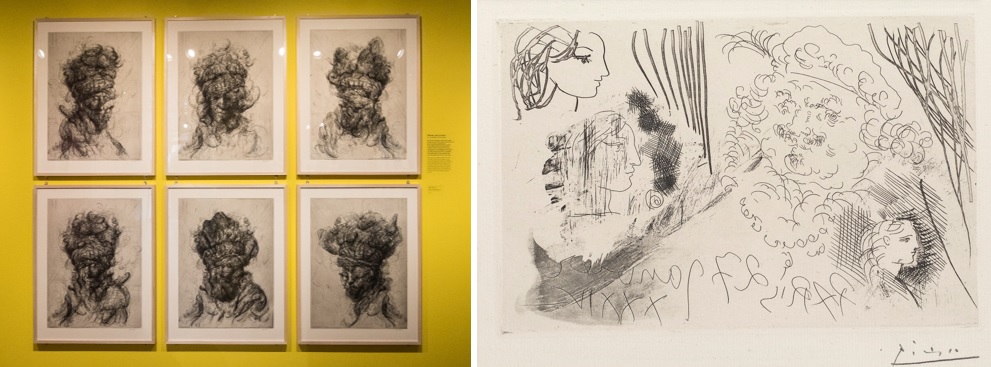Inspired by: Rembrandt’s ‘Heads’
Rembrandt has always fascinated us—not just in this Rembrandt Year, 350 years after his death, but down through the centuries. Rembrandt’s etchings have motivated artists in all kinds of ways. Our exhibition Inspired by Rembrandt – on view from 7 June until 1 September 2019– explores his impact on their art.
This time we have dipped into our own collection, for the museum is not just his former home and workshop. For more than a hundred years it has also been collecting art on paper—the collection now contains more than 4,000 prints. And not just Rembrandts, but art by his followers—from his own time and contemporary artists. The exhibition is composed of eight stimulating themes; on our blog we’ll highlight each of the them individually.
This time: ‘Heads’.
Rembrandt etched many heads or ‘tronies’. These are pieces in which he worked out a character or type, or tackled artistic problems such as expressing emotions. And he often explored the effects of light and shade. Rembrandt and his childhood friend Jan Lievens were the first artists to market these heads. Rembrandt’s pupil Ferdinand Bol picked this up immediately, as did the Genoese artist Giovanni Benedetto Castiglione. Rembrandt’s tronies have been inspiring artists like Picasso since the last century, and more recently the British artist Glenn Brown.
A Jumble of Tronies
This series of muddled heads is a jumble of tronies. Glenn Brown based his work on four tronies by Rembrandt. He began by copying Rembrandt’s heads on his iPad, then accentuated the lines, letting them continue around the head. Finally, Brown transferred the compositions to etching plates. He printed two of these plates on a sheet of paper, one on top of the other. The result: a visually intriguing texture of lines.
Picasso and Rembrandt
A sketch sheet with single drawings, just as Rembrandt made them. Picasso even drew Rembrandt’s portrait, including the typical beret with feather. Picasso made more than 2,500 prints in various techniques, often borrowing motifs from famous artists. He undoubtedly felt drawn to Rembrandt’s idiosyncratic style. Picasso even went a step further.He depicted Rembrandt’s curly hair with just a couple of swift dashes.

Left: Glenn Brown, Half-Life (after Rembrandt) 1–6, 2016, The Rembrandt House Museum, Amsterdam. | Right: Pablo Picasso, Rembrandt and Three Heads of Women, c. 1934, The Rembrandt House Museum, Amsterdam.


